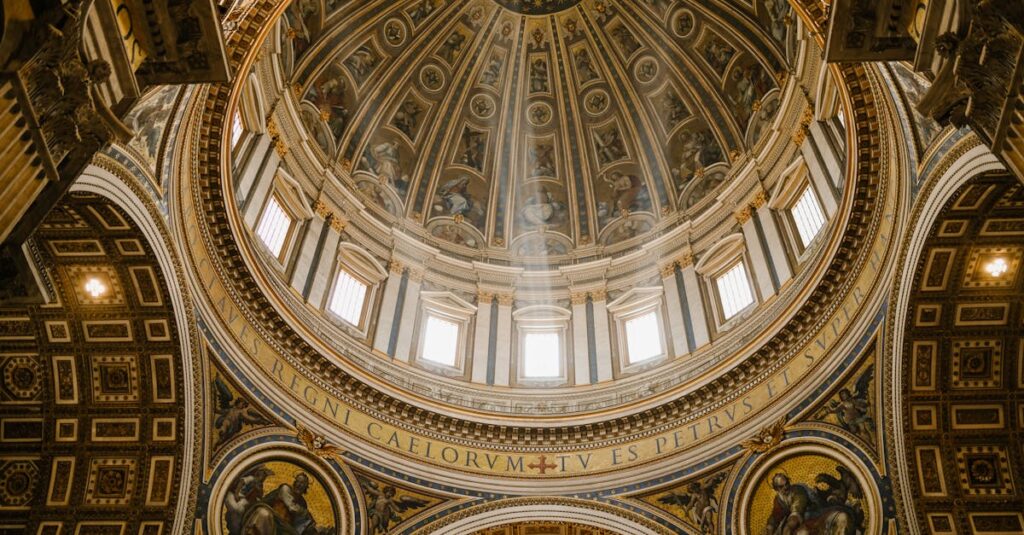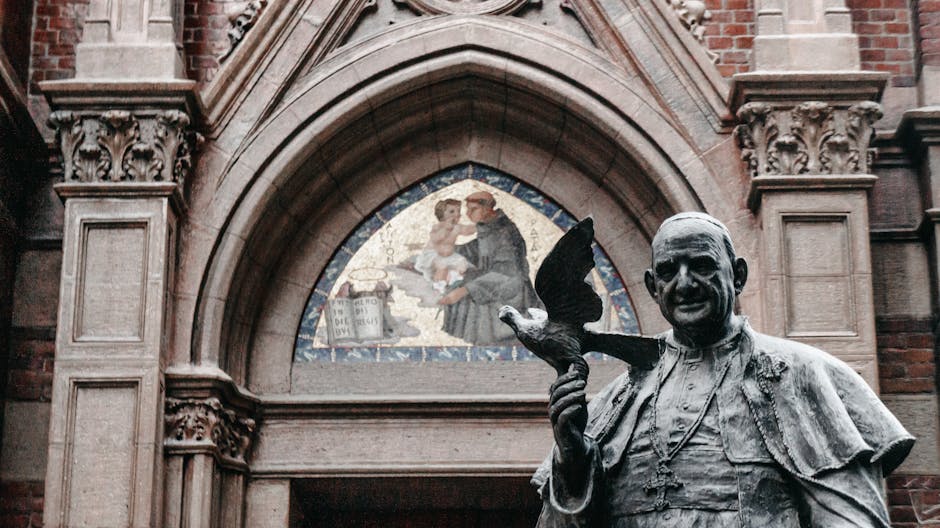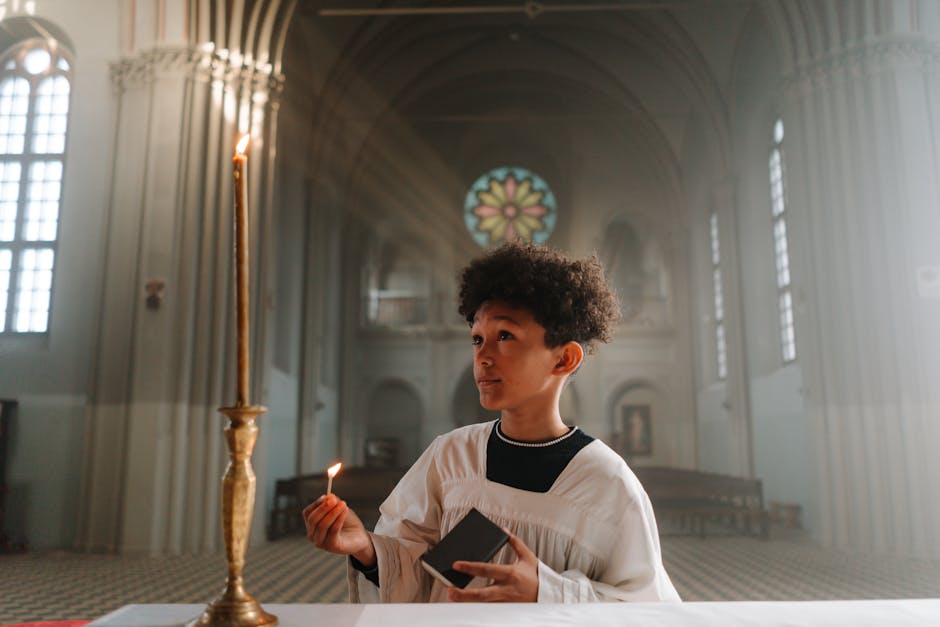Saint Christopher remains one of the most revered figures in Christian tradition, celebrated as the patron saint of travelers. His image adorns medals, pendants, and icons worldwide, offering comfort and protection to those embarking on journeys both physical and spiritual. Despite debates over his historical existence, the legend of Saint Christopher continues to inspire faith and devotion.
Historical Background
The name “Christopher” derives from the Greek Christophoros, meaning “Christ-bearer.” This etymology is intimately connected to the most famous legend surrounding him. While concrete historical records are sparse, Saint Christopher is believed to have lived during the 3rd century and was martyred under the Roman Emperor Decius around 251 AD.
The Legend of Saint Christopher
According to the most enduring and captivating legend, Saint Christopher was a man of extraordinary stature and strength, often described as a giant towering above ordinary people. His original name was Reprobus or Offerus, and he hailed from the land of Canaan. Driven by a profound desire to serve only the most powerful master, he set out on a quest to find and dedicate himself to the greatest king in the world.
Seeking the Greatest King
Reprobus first entered the service of a mighty local king renowned for his power and influence. For a time, he was content, believing he had found the most formidable ruler. However, one day in the royal court, a minstrel performed a song that included references to the devil. At the mention of the devil’s name, the king made the sign of the cross upon his forehead. Curious, Reprobus asked why the king made this gesture. The king admitted that he did so to ward off the devil, whom he feared.
Realizing that the devil held power even over his king, Reprobus decided that the devil must be more powerful. Determined to serve the greatest master, he left the king’s service to seek out the devil himself.
Serving the Devil
Reprobus wandered until he encountered a band of ruthless marauders, one of whom claimed to be the devil incarnate. Joining their ranks, he served the devil with the same dedication he had shown before. One day, as they traveled along a road, they came upon a wayside cross. At the sight of the cross, the devil became agitated and ordered a detour to avoid passing it. Puzzled, Reprobus inquired why they must avoid the cross. The devil evaded the question, but Reprobus pressed on until the devil confessed that he feared the symbol of the cross because it represented Christ, who was mightier than he.
Discovering Christ
Understanding that Christ was even more powerful than the devil, Reprobus resolved to seek out this new master. He traveled far and wide until he found a wise hermit who taught him about the Christian faith. Reprobus expressed his desire to serve Christ directly. The hermit suggested that Reprobus could serve Christ through fasting and prayer, but Reprobus found these practices difficult due to his immense size and appetite.
Recognizing Reprobus’s exceptional strength, the hermit proposed an alternative: since there was a dangerous river nearby where many travelers perished while attempting to cross, Reprobus could serve Christ by helping people safely reach the other side. Embracing this mission wholeheartedly, Reprobus built himself a hut by the river and began assisting travelers, carrying them on his shoulders across the treacherous waters.
Carrying the Christ Child
One stormy night, as fierce winds howled and the river swelled, Reprobus rested in his hut when he heard a faint voice calling his name. Opening the door, he found a small child standing in the rain, asking to be carried across the river. Despite the harsh weather, Reprobus lifted the child onto his shoulders and stepped into the turbulent waters.
As he waded deeper, the river rose higher, and the child seemed to grow heavier with each step. The weight became so immense that Reprobus feared he might not make it across. Struggling against the current, he used all his strength to keep himself and the child above water. Finally reaching the other side, he set the child down and exclaimed:
“You have put me in great danger! It felt as if I carried the whole world upon my shoulders.”
The child looked at him and replied:
“You not only carried the whole world but Him who created it. I am Christ your King, whom you serve by this work.“
With that revelation, the child vanished. Reprobus was left in awe, realizing that he had just carried the Christ Child himself. This miraculous encounter transformed him, and he felt a profound change within his heart.
Transformation and Baptism
Following this divine experience, Reprobus sought further instruction in the Christian faith. He was baptized by the hermit and given the name Christopher, meaning “Christ-bearer.” Embracing his new faith with fervor, Christopher dedicated his life to serving Christ and spreading the Gospel message.
Martyrdom and Legacy
Christopher’s newfound zeal led him to regions where Christians were persecuted. Unafraid of the dangers, he openly preached the teachings of Christ. His actions drew the attention of local authorities, and he was arrested for refusing to worship pagan gods.
Despite numerous attempts to make him renounce his faith through bribes and tortures, Christopher remained steadfast. According to tradition, he performed miracles even while imprisoned, converting many to Christianity. Ultimately, he was sentenced to death and martyred for his unwavering devotion.
His martyrdom solidified his status as a saint, and stories of his courage and faith spread far and wide. Saint Christopher became a symbol of strength, protection, and the journey of faith.
Symbolism of the Legend
The legend of Saint Christopher is rich with symbolic meaning:
- The Quest for the Greatest King: Represents the human search for truth and the desire to serve a higher purpose.
- Serving the Devil: Symbolizes the missteps and wrong paths one might take in life while seeking fulfillment.
- Helping Travelers Across the River: Illustrates selfless service and the call to assist others in their journeys, both physical and spiritual.
- Carrying the Christ Child: Emphasizes that by helping others, we are serving Christ himself. It also signifies bearing the weight of the world’s suffering and the transformative power of divine encounters.
As Jesus taught:
“Truly I tell you, whatever you did for one of the least of these brothers and sisters of mine, you did for me.“
(Matthew 25:40)
The Saint Christopher Medal
Origins and Significance
The legend of Saint Christopher carrying the Christ Child across the river inspired the creation of the Saint Christopher medal. Dating back to around the 7th century, these medals became popular as tangible symbols of protection and faith. The medal typically depicts Saint Christopher wading through water with the Christ Child on his shoulder, often with a staff in hand to steady his journey.
The Medal as a Sacramental
In the Catholic tradition, sacramentals are sacred signs that bear resemblance to the sacraments and signify spiritual effects obtained through the Church’s intercession. The Saint Christopher medal serves as a sacramental, intended to remind the wearer of God’s presence and the saint’s intercession.
Popularity Among Travelers
Initially, the medal gained popularity among sailors and seafarers who faced the perils of the open sea. As travel became more widespread, soldiers, pilgrims, and eventually motorists began to wear the medal, seeking Saint Christopher’s protection on their journeys. It became customary for Catholics and even non-Catholics to wear the medal or keep it in their vehicles.
The Medal’s Enduring Appeal
The continued popularity of the Saint Christopher medal reflects a universal desire for safety and guidance. Wearing the medal serves as a personal affirmation of faith and a request for the saint’s intercession. It symbolizes the journey of life and the hope that, like Saint Christopher, we may carry Christ within us and help others along the way.
As Pope Paul VI once remarked:
“In the face of life’s journey, the Christian is called to be a traveler who carries Christ within, bringing His love and mercy to all they meet.“
Biblical References and Themes
While Saint Christopher is not directly mentioned in the Bible, his legend embodies several biblical themes:
- Service to Others: His dedication to helping travelers echoes the call to serve found in Scripture. “For even the Son of Man did not come to be served, but to serve” (Mark 10:45).
- Bearing Burdens: Carrying the Christ Child symbolizes bearing one another’s burdens. “Carry each other’s burdens, and in this way, you will fulfill the law of Christ” (Galatians 6:2).
- Faith and Revelation: His encounter with Christ reflects the transformative power of faith. “Then their eyes were opened, and they recognized Him” (Luke 24:31).
Veneration and Patronage
Saint Christopher’s association with travelers stems from his legendary act of carrying people safely across the river. For centuries, people have invoked his protection when embarking on journeys. His veneration became widespread in the Middle Ages, and he was often depicted in churches, sometimes near the entrance, so that his image would be the first seen upon entering.
Artistic Depictions
Artists throughout history have been captivated by Saint Christopher’s imposing figure and the profound symbolism of his legend. In medieval art, he was frequently portrayed as a giant, emphasizing his extraordinary strength and the monumental task of carrying Christ.
Notable artistic works include:
- Hieronymus Bosch’s “Saint Christopher”: A painting that captures the saint’s journey across the river, rich with symbolic imagery.
- Statues in European Cathedrals: Many cathedrals feature sculptures of Saint Christopher, often positioned to greet visitors, reinforcing his role as a protector.
These artistic representations serve not only as devotional images but also as visual narratives that communicate the saint’s story and its spiritual lessons.
Saint Christopher in Different Christian Traditions
While venerated in the Roman Catholic Church, Saint Christopher is also honored in the Eastern Orthodox, Anglican, and Lutheran traditions.
Eastern Orthodox Tradition
In the Eastern Orthodox Church, Saint Christopher is commemorated on May 9th. He is sometimes depicted with a dog’s head, a portrayal rooted in ancient interpretations and hagiographies that suggest he came from a tribe of dog-headed people, symbolizing his former paganism and later transformation through Christ.
Roman Catholic Tradition
Although the Roman Catholic Church revised its universal liturgical calendar in 1969 and removed Saint Christopher’s feast day due to questions about his historical existence, he remains recognized as a saint. Local celebrations and devotions continue, reflecting the enduring impact of his legend.
Modern Interpretations and Cultural Impact
In contemporary culture, Saint Christopher remains a symbol of safe passage and protection. His image is found on:
- Medals and Pendants: Worn by travelers, athletes, and military personnel.
- Vehicle Accessories: Placed on dashboards or keychains as a sign of faith and a request for safety.
- Luggage and Travel Gear: Incorporated into designs to invoke his blessing on journeys.
Theological Perspectives
Some theologians view the legend of Saint Christopher as a metaphor for the Christian journey. His story illustrates the search for meaning, the challenges of faith, and the ultimate realization that true strength comes from serving Christ.
As Saint Augustine reflected:
“Faith is to believe what you do not see; the reward of this faith is to see what you believe.“
Saint Christopher’s life embodies this principle, demonstrating that faith can lead to profound transformation and purpose.
Did the Catholic Church Declare Saint Christopher a Myth?
No, the Catholic Church did not declare Saint Christopher a myth. In 1969, following the Second Vatican Council, the Church revised its universal liturgical calendar to streamline the number of saints commemorated universally. Due to limited historical evidence about his life, Saint Christopher’s feast day (previously celebrated on July 25) was removed from the general Roman calendar. However, this action did not revoke his sainthood or prohibit his veneration. Saint Christopher remains a recognized saint, and devotion to him continues to be encouraged at the local level. He remains a popular figure among the faithful, especially as the patron saint of travelers.
Quotes from Other Catholic Figures and Saints
Saint Thomas Aquinas on the importance of intermediaries in faith:
“As men do not see God, they see His works, and by them believe in His existence.“
Saint Christopher’s story serves as one such work, guiding believers toward a deeper understanding of service to God.
Pope Gregory the Great on the value of legends in spiritual teaching:
“For the sacred Scriptures themselves, though they contain true histories, make use of figures and similitudes to convey their meaning.“
The legend of Saint Christopher, though not a historical account, conveys essential truths about faith, service, and the presence of Christ in our lives.
Conclusion
Saint Christopher’s enduring legacy lies not in historical records but in the spiritual resonance of his story. His legend teaches us about the power of service, the importance of seeking truth, and the unexpected ways in which the divine can manifest in our lives. The creation of the Saint Christopher medal symbolizes the desire to carry his protective and guiding presence with us.
In a world filled with uncertainties, the figure of Saint Christopher offers a comforting reminder that faith can carry us through the most challenging journeys. As we navigate the rivers of our own lives, we might recall the words of Psalm 121:8:
“The Lord will watch over your coming and going both now and forevermore.“
Whether viewed as a historical figure or a symbolic representation, Saint Christopher continues to inspire and protect those who seek his intercession, reminding us that by carrying Christ in our hearts, we too can become bearers of His love to the world.




